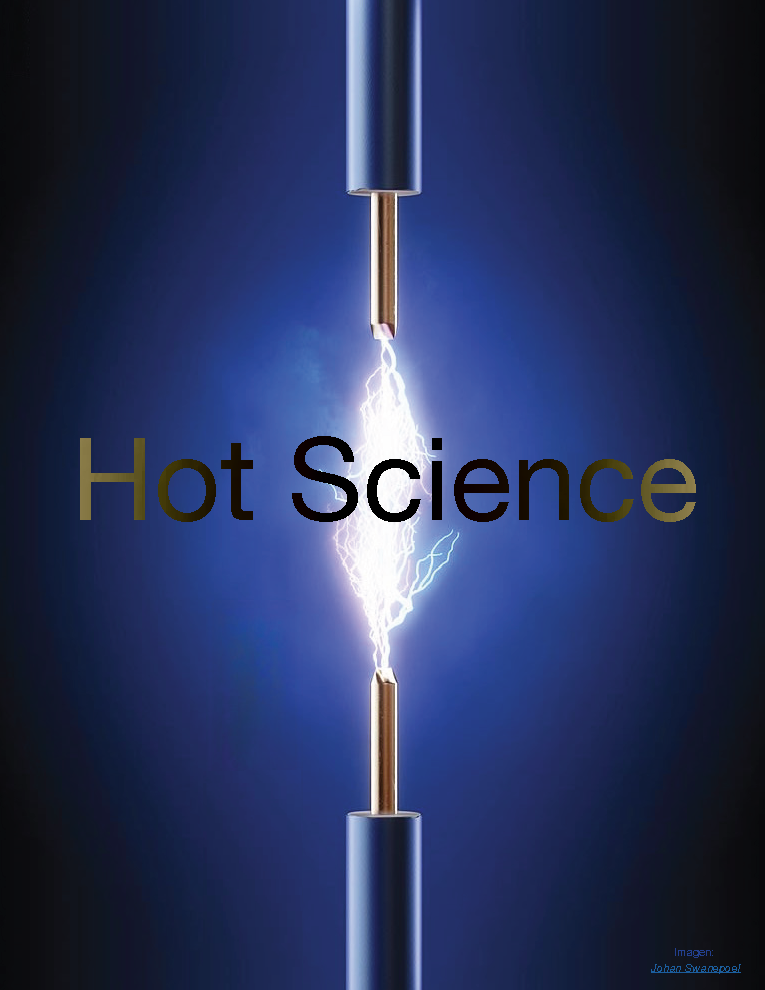Las Electro-poderosas: Bacterias creadoras de electricidad
Abstract
A medida que se estudian a las bacterias, más nos sorprenden, esta vez nos encontramos con bacterias que tienen la facultad de producir electricidad mediante el uso de un dispositivo conocido como Celda de Combustible Microbiana (CCM), que produce electricidad por medio de la respiración celular, además este descubrimiento puede tener diversas aplicaciones para lograr tecnologías amigables con el ambiente. Entre las aplicaciones de la CCM está el tratamiento de aguas residuales de diversos efluentes, tratamiento de suelos contaminados y recuperación de metales de interés.
References
He, Z., & Angenent, L. T. (2006). Application of Bacterial Biocathodes in Microbial Fuel Cells. Electroanalysis, 18(19-20), 2009-2015. https://doi.org/10.1002/elan.200603628
University of Reading. National Centre for Biotechnology Education. (s. f.). https://www.ncbe.reading.ac.uk/microbial-fuel-cell/
Du, Z., Li, H., & Gu, T. (2007). A state of the art review on microbial fuel cells: A promising technology for wastewater treatment and bioenergy. Biotechnology Advances, 25(5), 464-482. https://doi.org/10.1016/j.biotechadv.2007.05.004
Ikeda, S., Takamatsu, Y., Tsuchiya, M., Suga, K., Tanaka, Y., Kouzuma, A., & Watanabe, K. (2021). Shewanella oneidensis MR-1 as a bacterial platform for electro-biotechnology. Essays in Biochemistry, 65(2), 355-364. https://doi.org/10.1042/EBC20200178
Howley, E., Ki, D., Krajmalnik-Brown, R., & Torres, C. I. (2022). Geobacter sulfurreducens’ Unique Metabolism Results in Cells with a High Iron and Lipid Content. Microbiology Spectrum, 10(6), e02593-22. https://doi.org/10.1128/spectrum.02593-22
Logan, B. E. (2007). Microbial Fuel Cells (1.a ed.). Wiley. https://doi.org/10.1002/9780470258590
Patel, A., Mungray, A. A., & Mungray, A. K. (2020). Technologies for the recovery of nutrients, water and energy from human urine: A review. Chemosphere, 259, 127372. https://doi.org/10.1016/j.chemosphere.2020.127372
Pant, D., Singh, A., Van Bogaert, G., Irving Olsen, S., Singh Nigam, P., Diels, L., & Vanbroekhoven, K. (2012). Bioelectrochemical systems (BES) for sustainable energy production and product recovery from organic wastes and industrial wastewaters. RSC Adv., 2(4), 1248-1263. https://doi.org/10.1039/C1RA00839K
Nancharaiah, Y. V., Venkata Mohan, S., & Lens, P. N. L. (2015). Metals removal and recovery in bioelectrochemical systems: A review. Bioresource Technology, 195, 102-114. https://doi.org/10.1016/j.biortech.2015.06.058
Li, T., Li, R., & Zhou, Q. (2021). The application and progress of bioelectrochemical systems (BESs) in soil remediation: A review. Green Energy & Environment, 6(1), 50-65. https://doi.org/10.1016/j.gee.2020.06.026
Synthetic Biology and Microbial Fuel Cells: Towards Self-Sustaining Life Support Systems. (s. f.). https://www.nasa.gov/centers/ames/cct/office/cif/2011/microbial_fuel_cells.html
Electrified Bacteria Clean Wastewater, Generate Power. (s. f.). https://spinoff.nasa.gov/Spinoff2019/ee_1.html
Sawasdee, V., SiriornBoonyawanich y NiponPisutpaisal. (2015). Simultaneous Treatment of Nitrogen-Rich
Wastewater and ElectricityGeneration using Single-Chamber Microbial Fuel Cells. Energy Procedia, 79, 624-628. https://doi.org/10.1016/j.egypro.2015.11.543
Liu, X., Gao, H., Ward, J. E., Liu, X., Yin, B., Fu, T., Chen, J., Lovley, D. R., & Yao, J. (2020). Power generation from ambient humidity using protein nanowires. Nature, 578(7796), 550-554. https://doi.org/10.1038/s41586-020-2010-9

Downloads
Published
How to Cite
Issue
Section
License
Copyright (c) 2023 Revista de divulgación científica iBIO

This work is licensed under a Creative Commons Attribution-NonCommercial-NoDerivatives 4.0 International License.
Self-archiving or deposit of the works in their post-publication version (editorial version) is permitted in any personal, institutional or thematic repository, social or scientific networks. The above applies from the moment of publication of the article in question on the website of the Revista de divulgación científica iBIO.




